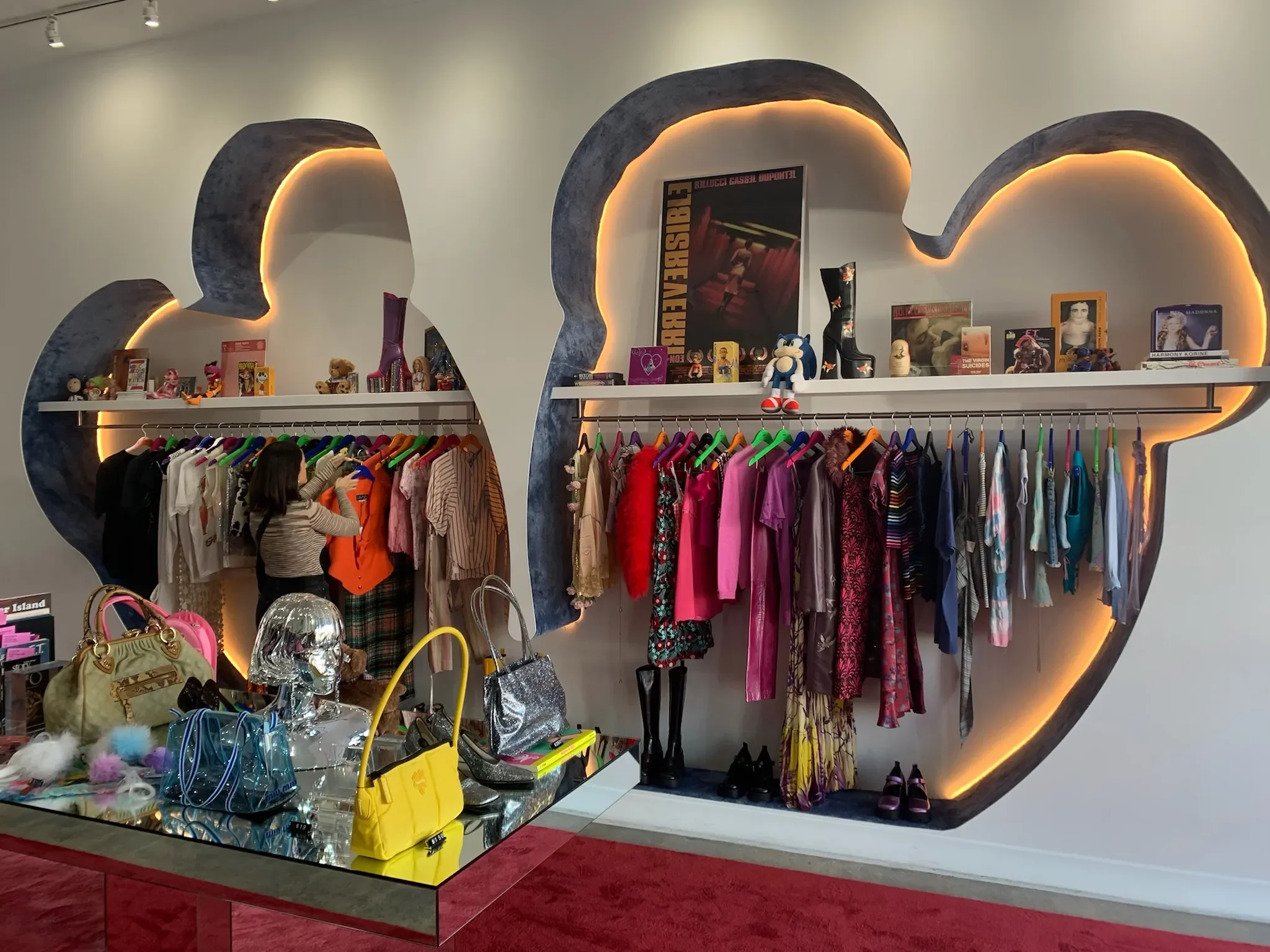Trend Watch: The Comeback of Nostalgia Retail: Why Vintage is Capturing Hearts (and Closets) Again
Aralda Vintage's curated collection at Marc Jacobs' Los Angeles store - WWD.com
Walk into a well-curated vintage shop and it’s more than a shopping trip, it’s a time machine. You might brush your hand over the sleeve of a perfectly preserved ’70s suede jacket or catch sight of a ’90s slip dress that feels eerily familiar. Across generations, from Gen Z to Baby Boomers, shoppers are rediscovering the magic of fashion that carries history in its seams.
At Blue Butterfly, we’ve been watching this revival with keen interest. Nostalgia retail isn’t just trending, it’s reshaping the way people shop, invest, and even express themselves.
Fashion With Feeling
While today’s fast fashion churns out trends that fade in weeks, vintage offers something far more enduring: an emotional anchor. A 2023 Wpromote study revealed that 70% of consumers feel more emotionally connected to brands that evoke nostalgia. These aren’t just clothes, they're vessels for memories, touchstones for a personal or cultural moment.
That emotional connection can be as simple as finding the perfect band tee from your teen years or slipping into a dress that recalls a grandmother’s stories. And unlike buying something brand-new, choosing vintage is a conscious decision to weave the past into the present.
The Sustainability Shift
There’s also a deeper, more practical reason for vintage’s resurgence: sustainability. Shoppers, especially Millennials and Gen Z, are becoming more intentional about their wardrobes. The environmental toll of fast fashion from textile waste to carbon emissions has sparked a reckoning. According to ThredUp’s 2023 Resale Report, the secondhand market is projected to grow 11x faster than traditional retail apparel, reaching $77 billion by 2025.
For 64% of Gen Z and Millennials, vintage and secondhand clothing isn’t just about looking good, it’s about doing good. It’s a way to reduce environmental harm without sacrificing personal style. In fact, it amplifies individuality. A C2 Fashion Studio survey found that 78% of young shoppers choose vintage specifically to avoid the cookie-cutter trends dominating mainstream retail.
Where Luxury Meets Legacy
The appeal doesn’t stop at thrift store racks. High-end designer vintage is becoming a category of its own, blending the prestige of luxury fashion with the ethics of reuse. GQ reports that resale values of vintage brands like Chanel and Hermès have climbed up to 70% in just five years, making them as much an investment as a fashion choice.
These pieces endure not only in quality but in cultural relevance. They are, in many ways, wearable art crafted with an attention to detail that’s rare in mass-market manufacturing today. For younger consumers, they represent a chance to own a slice of fashion history while treading lightly on the planet.
Styled for the Story
For stylists and curators, vintage is more than a shopping category; it's a creative playground. Legendary stylist Law Roach, whose career began in a Chicago vintage boutique, recalls sourcing many of Zendaya’s early red carpet looks from Deliciously Vintage. “Vintage has always been my addiction,” he says, a sentiment echoed across the industry.
Celebrity stylist Alexandra Imgruth notes a growing appetite for vintage among her clients, “Fashion can be frivolous, but we already have so many incredible pieces in the world, they deserve a second, third, fourth, and fifth life.”
And for Brynn Jones, founder of Aralda Vintage, the draw is deeply personal, “Vintage fashion is a tangible piece of history, intricately crafted and still in beautiful condition.”
These fashion voices reflect a broader truth, vintage allows stylists to tell richer stories, turning clothing into conversation pieces.
Evolving the Vintage Experience
The way we shop vintage is changing, too. Some retailers are blending the ease of digital shopping with the tactile joy of browsing in person, a combination that can boost sales by up to 30% according to Vogue Business. Others are leaning into storytelling, curating collections that guide shoppers through an era or theme, which can increase time spent in-store by 40% (GQ).
Social media has also given vintage an incredible second wind, fueling a 150% surge in vintage fashion searches since 2020 (AP News). Instagram reels, TikTok hauls, and influencer partnerships are introducing younger audiences to the thrill of the hunt.
Shops Leading the Revival

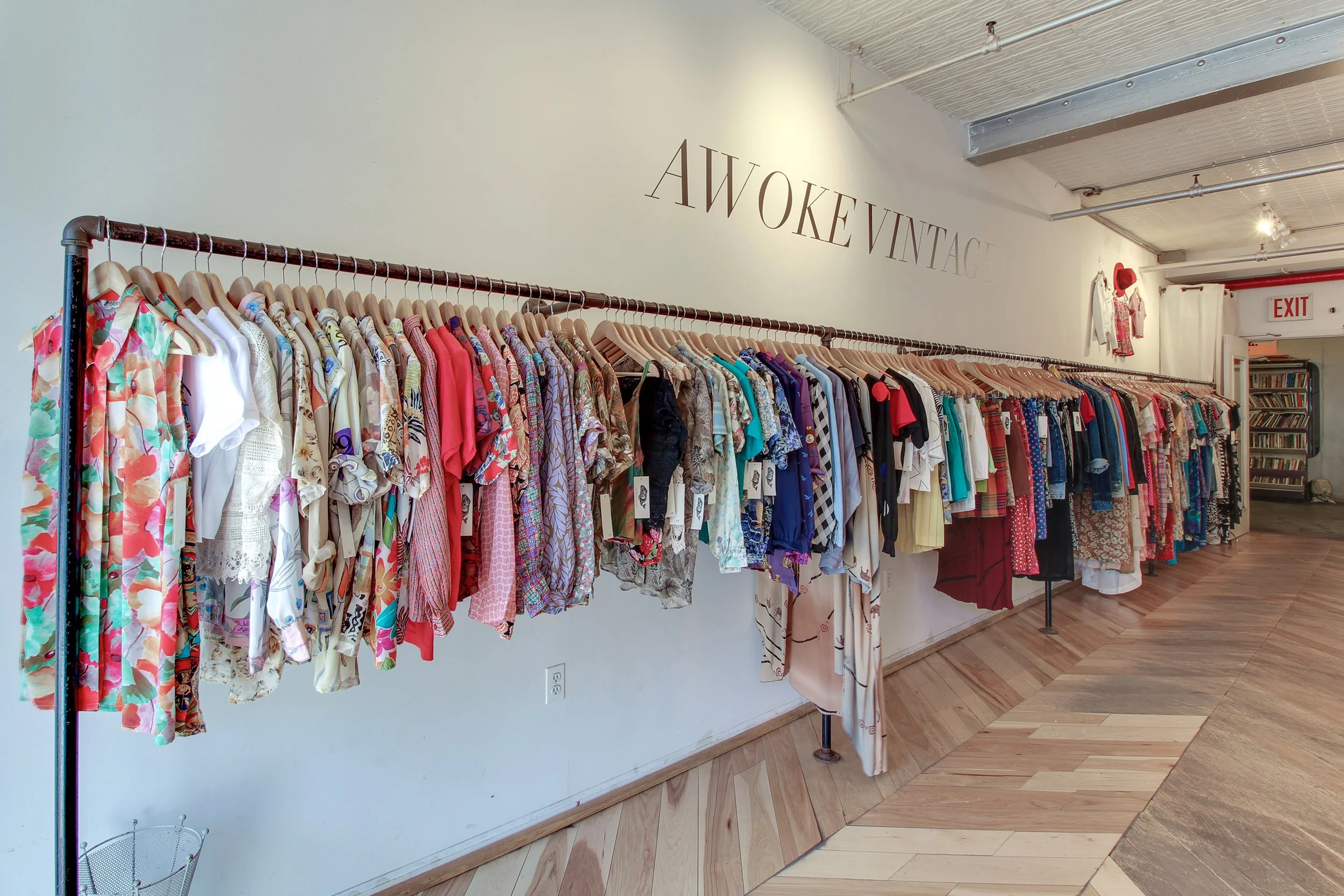
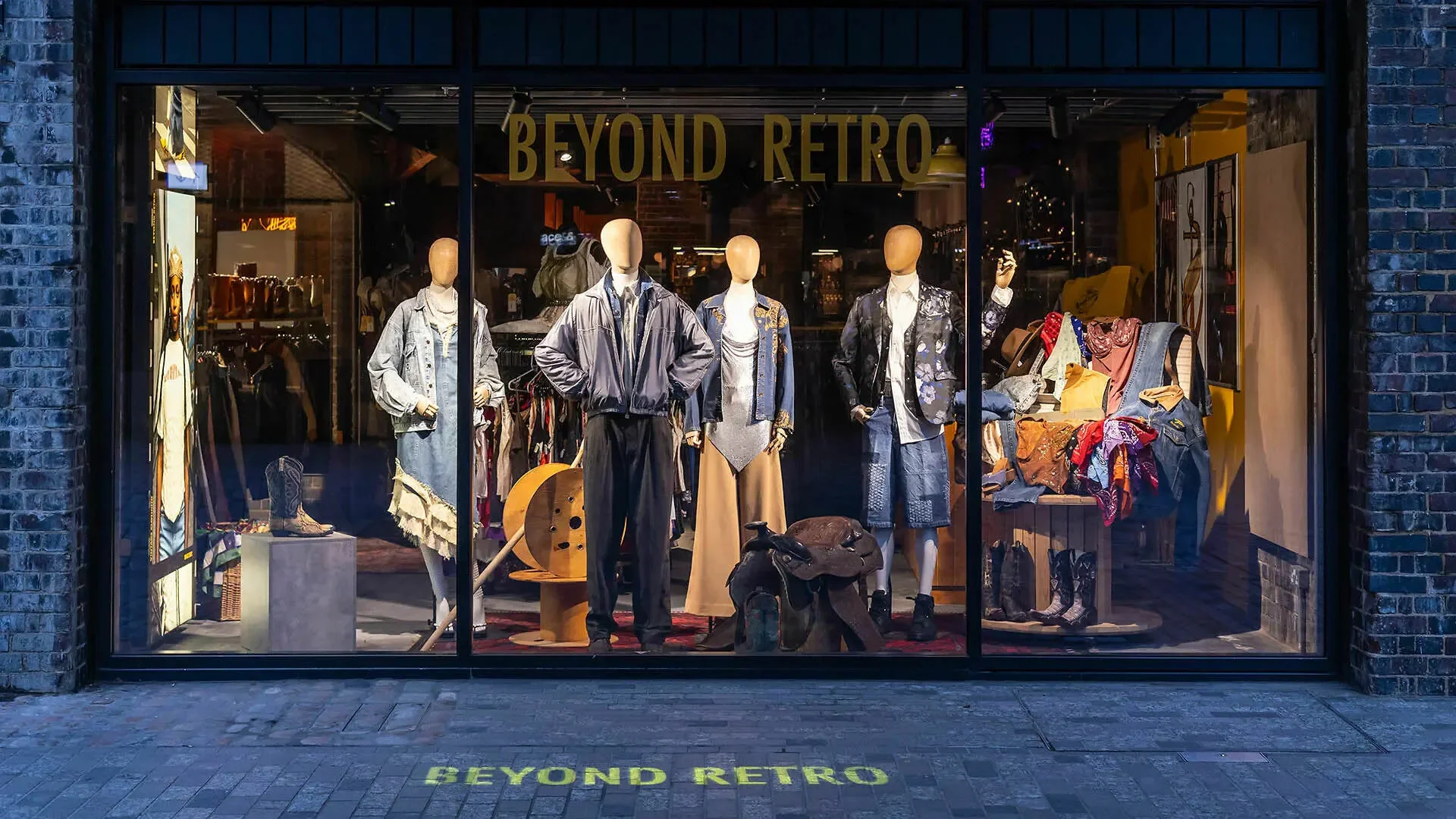
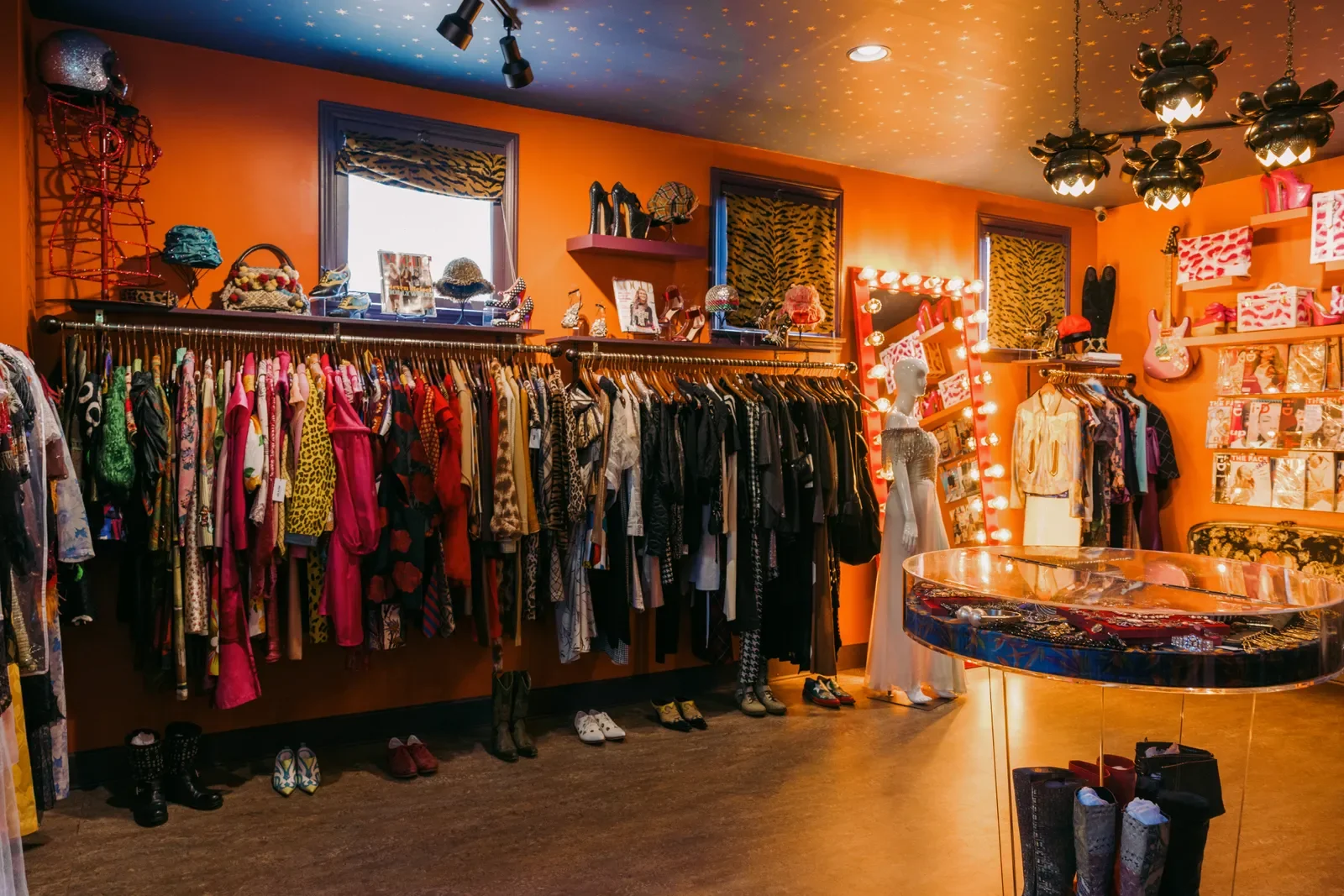
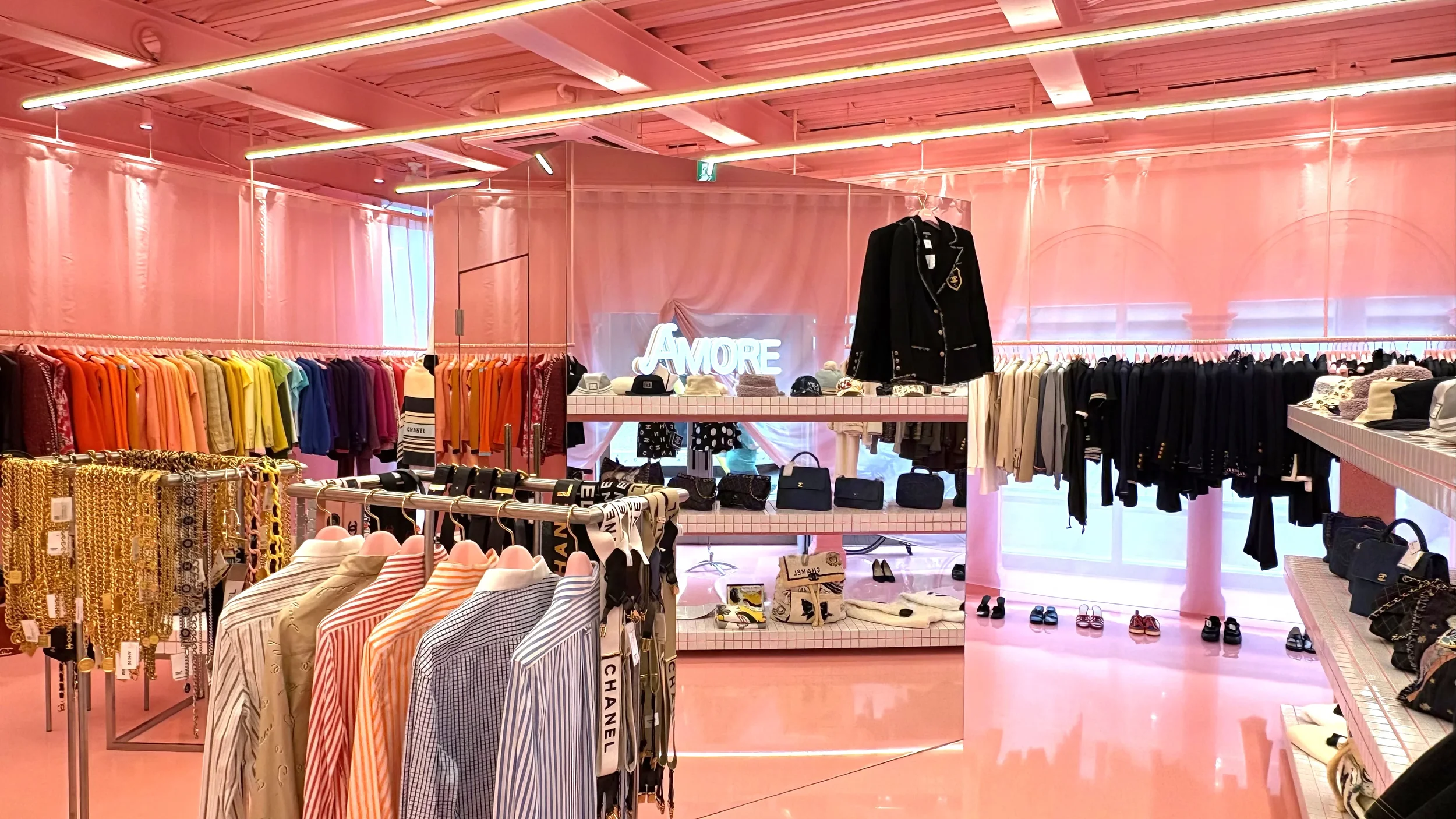
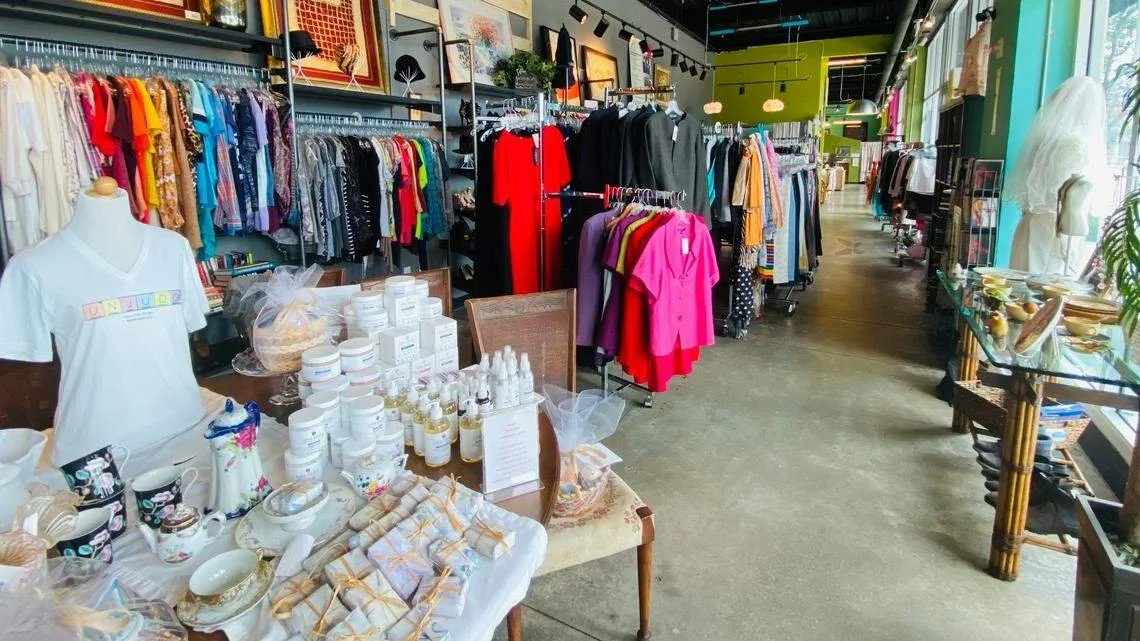
From niche boutiques to online platforms, vintage is everywhere and thriving. In New York, What Goes Around Comes Around offers museum-worthy designer finds, while Awoke Vintage in Brooklyn serves effortlessly cool looks to a devoted Gen Z following. London’s Beyond Retro boasts a global reach, and Rellik is a go-to for editors seeking avant-garde gems.
On the West Coast, Aralda Vintage and Wasteland curate very different but equally compelling visions, one glamorous, the other edgy. Tokyo’s Amore Vintage is a pilgrimage site for Chanel and Hermès lovers, while Depop connects millions of thrifters online worldwide.
From No Standing in NYC’s streetwear scene to Dragonfly Thrift Boutique in Miami (where every purchase supports a cause), the options are as varied as the eras they represent. Whether you’re after military jackets from Rokit Vintage in London or modern-ready denim from Past Studies in Chicago, there’s a store and a story waiting for you.
Nostalgia retail bridges generations, blends luxury with sustainability, and turns fashion into storytelling. Nostalgia retail is just one of many trends we track at Blue Butterfly to help our clients reimagine their retail mix, attract new audiences, and keep properties vibrant.

